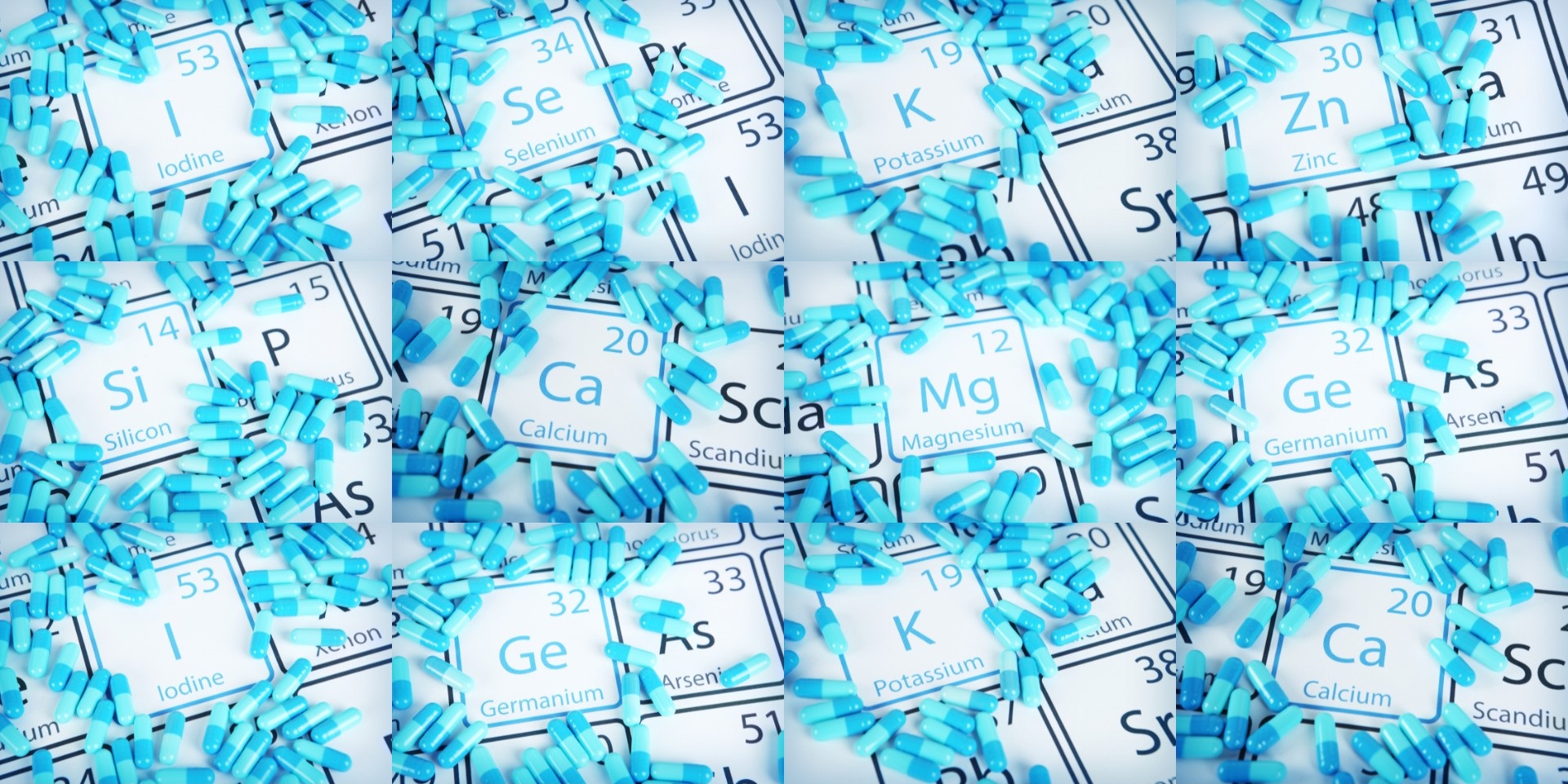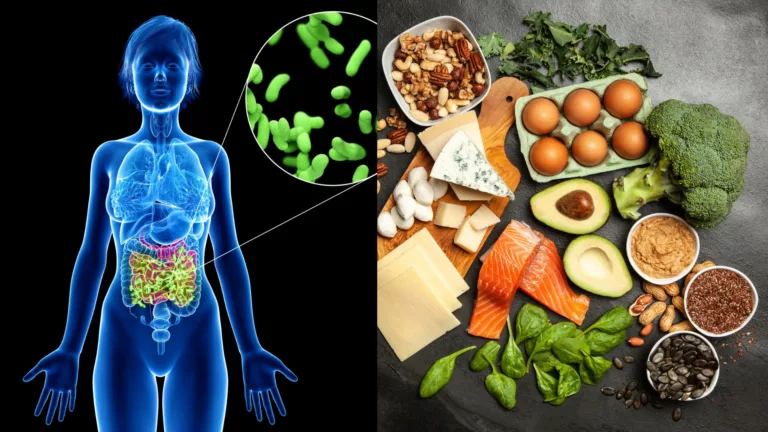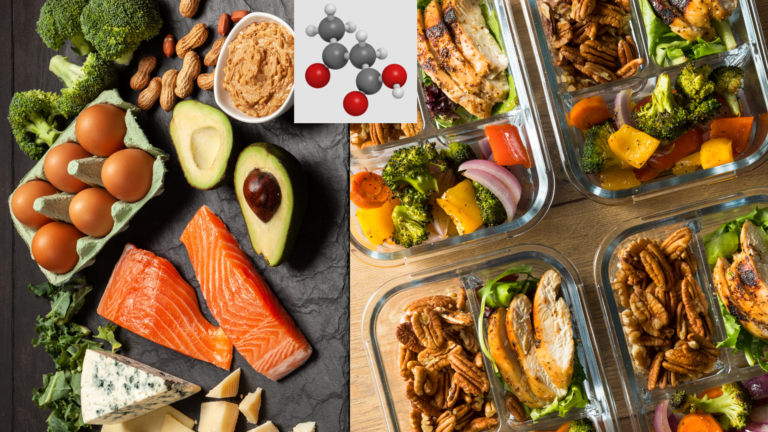As we age, our bodies undergo significant changes, especially in how we regulate fluids and electrolytes. For individuals over 40, these changes become more pronounced, making it crucial to pay attention to electrolyte balance—particularly when following a ketogenic diet. Electrolytes in a Keto Diet after 40 play a vital role in maintaining proper hydration, muscle function, and overall health. On a keto diet, the body tends to lose electrolytes more quickly due to reduced insulin levels and increased excretion of fluids.
This comprehensive guide will explore the importance of electrolytes in a ketogenic diet, focusing on why those over 40 need to pay extra attention to their sodium, potassium, and magnesium intake. We’ll also dive into the symptoms of electrolyte imbalances, how to ensure you’re getting enough through diet and supplements, and how your electrolyte needs may change throughout your keto journey.
Key Electrolytes in a Keto Diet After 40
Electrolytes are minerals that carry an electrical charge and are essential for various bodily functions, including maintaining fluid balance, muscle contractions, and nerve function. When following a ketogenic diet, your body undergoes a significant shift in how it processes fluids and electrolytes. This shift is particularly impactful for individuals over 40, as age-related changes can further exacerbate electrolyte imbalances. Below, we explore the three key electrolytes—sodium, potassium, and magnesium—that are vital to maintaining your health and performance on a ketogenic diet.
Sodium: The Essential Mineral for Fluid Balance
Sodium is crucial for regulating fluid balance, blood pressure, and nerve function. It helps ensure that water is evenly distributed across the body’s cells and tissues, which is essential for muscle function and overall hydration.
- How Sodium is Lost on Keto: When you reduce carbohydrates on a ketogenic diet, insulin levels drop. Lower insulin causes the kidneys to excrete more sodium through urine, leading to rapid sodium loss, especially in the early stages of keto. This loss can result in dehydration, muscle cramps, headaches, and other symptoms commonly known as “keto flu.”
- How Much Sodium Do You Need on Keto?: Individuals following a keto diet, especially those over 40, typically need more sodium than on a standard diet. While the normal daily requirement is around 1,500–2,300 mg/day, keto dieters should aim for 3,000–5,000 mg/day to compensate for the increased loss of sodium through urine. This higher intake helps prevent dehydration and supports muscle and nerve function.
Potassium: Vital for Muscle and Heart Health
Potassium is another essential electrolyte, playing a key role in maintaining proper heart and muscle function, as well as regulating fluid balance within cells. It also works closely with sodium to keep the body’s electrolyte balance in check.
- Why Potassium is Critical on Keto: Just like sodium, potassium is excreted at higher rates when insulin levels drop on a ketogenic diet. A deficiency in potassium can lead to muscle cramps, weakness, fatigue, and in severe cases, heart palpitations. This is particularly concerning for individuals over 40, as cardiovascular health becomes increasingly important with age.
- How Much Potassium is Needed on Keto?: The general daily recommendation for potassium is around 2,500–3,000 mg/day. However, on a keto diet, this should be increased to 3,000–4,700 mg/day to ensure that your muscles and heart are functioning properly and to avoid the symptoms of potassium deficiency.
Magnesium: Supporting Muscle Recovery and Energy
Magnesium is involved in more than 300 biochemical reactions in the body, including energy production, muscle relaxation, and nerve function. It’s crucial for preventing muscle cramps, promoting restful sleep, and supporting overall energy levels.
- How Keto Impacts Magnesium Levels: Magnesium is often depleted during ketosis, particularly because of increased fluid loss. This can lead to symptoms such as muscle cramps, fatigue, irritability, and difficulty sleeping—all of which can make adhering to a keto diet more challenging, especially for those over 40, who may already experience muscle loss and sleep disturbances due to aging.
- How Much Magnesium Do You Need on Keto?: In normal conditions, the recommended daily intake for magnesium is 310–420 mg/day. However, on a keto diet, individuals may need 400–600 mg/day to prevent deficiencies and support muscle recovery and energy metabolism.
By ensuring adequate intake of sodium, potassium, and magnesium, individuals on a keto diet—particularly those over 40—can avoid many common pitfalls such as dehydration, muscle cramps, and fatigue. These electrolytes are not only critical for short-term success on keto but also for long-term health and performance. In the next section, we’ll explore how your electrolyte needs vary depending on whether you’re in the initial phase of keto or in the keto-adapted phase.
Electrolyte Needs in Different Phases of a Keto Diet
The body’s electrolyte needs can vary significantly depending on where you are in your keto journey. The ketogenic diet prompts major shifts in how your body processes electrolytes, especially during the initial induction phase when the body is adapting to fat as its primary fuel source. Once you’ve transitioned into the keto-adapted phase (also called the stationary phase), your electrolyte requirements stabilize but remain higher than in a standard diet. In this chapter, we’ll explore how electrolyte needs change in each phase of the keto diet, with a particular focus on individuals over 40.
Induction Phase (First 4–6 Weeks)
The induction phase is the initial stage of the ketogenic diet, where the body shifts from using glucose (carbohydrates) to using fat as its primary energy source. This transition often leads to a rapid loss of fluids and electrolytes, which can result in unpleasant symptoms commonly known as “keto flu.”
- Why Electrolyte Needs Are Higher at the Beginning:
- In the induction phase, insulin levels drop significantly. Since insulin helps the kidneys retain sodium, this reduction in insulin causes a spike in sodium excretion, leading to rapid fluid and sodium loss. This also affects other key electrolytes like potassium and magnesium, which are excreted alongside sodium.
- The body loses glycogen stores quickly during the induction phase, and glycogen holds water. As glycogen depletes, water is flushed from the body, leading to increased urination and electrolyte loss.
- Recommended Sodium, Potassium, and Magnesium Levels in the Induction Phase:
- Sodium: In the induction phase, sodium needs are higher than usual. Aim for 4,000–5,000 mg/day of sodium to replace lost electrolytes and prevent keto flu symptoms like dizziness, headaches, and fatigue.
- Potassium: Potassium levels should be increased to 3,500–4,700 mg/day during the induction phase to maintain muscle and heart function and prevent muscle cramps and weakness.
- Magnesium: Since magnesium is also excreted more rapidly, intake should be elevated to 400–600 mg/day to avoid fatigue, muscle cramps, and sleep disturbances.
Summary: The induction phase of the keto diet presents the most significant electrolyte challenges due to rapid fluid and mineral loss. During this time, it’s crucial to increase sodium, potassium, and magnesium intake to ease the transition into ketosis and prevent keto flu.
Stationary Mode (Keto-Adapted Phase)
After approximately 4–6 weeks on the keto diet, the body enters a keto-adapted phase, where it becomes more efficient at using fat for fuel. At this point, the body’s electrolytes need to stabilize, but they remain higher than in a standard diet due to ongoing changes in insulin levels and fluid balance.
- How Electrolyte Requirements Change Once Keto-Adapted:
- Once you’re keto-adapted, the initial rapid loss of electrolytes slows down, but sodium, potassium, and magnesium still need to be consumed at elevated levels compared to non-keto diets. This is because the body continues to maintain lower insulin levels, meaning less sodium is retained by the kidneys. Although the body becomes better at conserving water and electrolytes over time, it is still necessary to monitor intake to avoid long-term deficiencies.
- Recommended Sodium, Potassium, and Magnesium Levels in the Stationary Mode:
- Sodium: In the stationary mode, sodium intake can be slightly reduced compared to the induction phase but should still remain higher than in a typical diet. Aim for 3,000–4,000 mg/day to maintain fluid balance and support nerve and muscle function.
- Potassium: After the body becomes keto-adapted, potassium needs stabilize but should still be higher than normal. Continue consuming around 3,000–4,000 mg/day to support cardiovascular and muscular health.
- Magnesium: Magnesium requirements may decrease slightly once the body is adapted to keto, but it’s still important to consume 300–400 mg/day to maintain energy levels, prevent cramps, and promote muscle recovery.
Summary: In the stationary (keto-adapted) phase, electrolyte requirements stabilize but remain higher than on a non-keto diet. It’s important to continue monitoring sodium, potassium, and magnesium intake to avoid imbalances that can lead to fatigue, cramps, or other issues over the long term.
By understanding the distinct electrolyte needs during the induction phase and the keto-adapted phase, individuals can better manage their hydration and health on a ketogenic diet. This is particularly crucial for those over 40, as age-related changes can make electrolyte imbalances more pronounced. Maintaining proper levels of sodium, potassium, and magnesium will ensure that you stay energized, hydrated, and healthy throughout your keto journey.
Common Symptoms of Electrolyte Imbalance on Keto
Electrolyte imbalances are one of the most common challenges faced by individuals on a ketogenic diet, especially during the early stages of keto-adaptation. As the body loses sodium, potassium, and magnesium through increased urination, these essential minerals must be replenished to maintain proper bodily functions. A range of uncomfortable and sometimes serious symptoms can arise without sufficient electrolytes. This is particularly important for individuals over 40, as age-related changes can make them more susceptible to electrolyte deficiencies.
In this chapter, we’ll cover the common symptoms of electrolyte imbalance on a keto diet and what each specific electrolyte deficiency looks like.
Recognizing Signs of Sodium Deficiency
Sodium is crucial for maintaining fluid balance, nerve function, and muscle contractions. When sodium levels drop, the body struggles to retain water, leading to dehydration and other issues.
- Common Symptoms of Sodium Deficiency on Keto:
- Headaches: A lack of sodium can lead to headaches, which are a hallmark symptom of the “keto flu.” This occurs because of the body’s decreased ability to retain water and regulate blood pressure.
- Dizziness and Lightheadedness: As sodium levels drop, blood pressure can fall, causing dizziness, especially when standing up quickly. This is often due to dehydration.
- Fatigue and Weakness: Low sodium can result in low energy levels and muscle weakness, making everyday tasks feel more difficult.
- Muscle Cramps: Sodium plays a crucial role in muscle contractions. When there isn’t enough sodium in the body, muscles can become more prone to cramping, particularly after physical activity.
Tip: If you experience these symptoms, increasing sodium intake through electrolyte supplements, bone broth, or adding more salt to your meals can help restore balance.
Symptoms of Potassium Deficiency
Potassium is vital for regulating heartbeat, muscle contractions, and fluid balance inside cells. When potassium levels drop, the body can experience a range of symptoms that can affect both cardiovascular and muscular health.
- Common Symptoms of Potassium Deficiency on Keto:
- Muscle Cramps and Weakness: One of the earliest and most noticeable signs of potassium deficiency is muscle cramps, especially in the legs. Potassium is necessary for muscle relaxation, so low levels can cause muscles to contract painfully.
- Heart Palpitations: Potassium regulates electrical signals in the heart. A deficiency can lead to irregular heartbeats, which can feel like fluttering or skipped beats.
- Constipation: Potassium helps maintain digestive system muscle contractions. Low potassium levels can lead to slower bowel movements and constipation.
- Fatigue: Like sodium, low potassium can contribute to overall fatigue and weakness, making it harder to perform daily tasks or exercise effectively.
Tip: To combat potassium deficiency, increase your intake of potassium-rich foods like avocados, spinach, and mushrooms, or consider electrolyte supplements.
Symptoms of Magnesium Deficiency
Magnesium is a key mineral that supports over 300 biochemical reactions in the body, including energy production, muscle relaxation, and nerve function. On keto, magnesium levels can drop quickly due to increased urination, leading to several unpleasant symptoms.
- Common Symptoms of Magnesium Deficiency on Keto:
- Muscle Cramps and Spasms: Magnesium plays a significant role in muscle relaxation. A deficiency can cause muscle cramps, twitching, or spasms, particularly after exercise.
- Difficulty Sleeping: Magnesium helps regulate neurotransmitters that promote relaxation and sleep. Low magnesium levels can result in insomnia or poor sleep quality.
- Fatigue and Weakness: Magnesium is essential for energy production at the cellular level. A lack of magnesium can leave you feeling tired, sluggish, and unable to recover properly after physical activity.
- Anxiety and Irritability: Magnesium has calming properties that help regulate the nervous system. Deficiencies can lead to increased anxiety, irritability, or feelings of stress.
Tip: To boost magnesium levels, consume magnesium-rich foods like leafy greens, nuts, and seeds, or take a high-quality magnesium supplement, especially if you’re over 40.
How to Recognize an Electrolyte Imbalance
When following a ketogenic diet, it’s important to listen to your body. If you experience any of the symptoms outlined above, you may be dealing with an electrolyte imbalance. This is particularly likely during the first few weeks of starting keto (the induction phase), but it can happen at any point during your keto journey if electrolyte intake is not properly managed. For individuals over 40, maintaining a careful balance of electrolytes is essential, as age-related changes can make symptoms more severe.
Key Warning Signs of Electrolyte Imbalance:
- Frequent headaches or dizziness
- Muscle cramps, twitching, or weakness
- Fatigue or difficulty concentrating
- Irregular heartbeat or heart palpitations
- Sleep disturbances or anxiety
If you experience any of these symptoms, it’s important to adjust your sodium, potassium, and magnesium intake immediately. Ensuring you stay hydrated and properly balanced with electrolytes will prevent these symptoms and allow you to enjoy the full benefits of a ketogenic diet.
Best Sources of Electrolytes for Keto Dieters
Maintaining the right balance of electrolytes is crucial for keto dieters, especially those over 40. As your body shifts into ketosis, the rapid loss of sodium, potassium, and magnesium through increased urination requires replenishment to prevent dehydration, muscle cramps, and other symptoms of electrolyte imbalance. The good news is that these essential electrolytes can be replenished through both dietary sources and supplements.
In this chapter, we’ll explore the best sources of sodium, potassium, and magnesium for keto dieters and provide practical tips on how to incorporate these vital minerals into your daily routine.
Dietary Sources of Sodium
Sodium is one of the first electrolytes to deplete when you start a ketogenic diet due to reduced insulin levels. Fortunately, sodium is easy to replenish through both food and beverages. Here are some keto-friendly sources of sodium:
- Bone Broth: One of the best ways to replenish sodium is by consuming bone broth, which is rich in both sodium and other nutrients that support overall health. Many keto dieters use bone broth as a key source of electrolytes.
- Salted Nuts: Nuts like almonds, macadamia nuts, and pecans are great keto snacks. Add some extra salt to these to boost your sodium intake.
- Pickles and Pickle Juice: Pickles are naturally high in sodium, and drinking small amounts of pickle juice can help quickly restore sodium levels. Look for pickles with no added sugar to stay keto-friendly.
- Cured Meats (in moderation): Foods like bacon, sausage, and ham can be good sources of sodium. However, make sure to choose options with no added sugar or preservatives.
- Table Salt (Himalayan or Sea Salt): Simply adding salt to your meals is an easy and effective way to meet your sodium needs. Opt for Himalayan salt or sea salt, which contain trace minerals that are beneficial for health.
Tip: During the induction phase of keto, aim for 4,000–5,000 mg of sodium per day to prevent symptoms of keto flu and maintain energy levels.
Dietary Sources of Potassium
Potassium plays a key role in muscle function, heart health, and fluid balance, and it’s another electrolyte that’s quickly depleted on a keto diet. To maintain proper potassium levels, incorporate these keto-friendly foods:
- Avocados: Avocados are one of the best sources of potassium, providing around 700 mg per fruit. They’re also rich in healthy fats, making them a staple in the keto diet.
- Leafy Greens: Spinach, kale, and Swiss chard are all excellent sources of potassium. These greens are also low in carbs, making them ideal for keto dieters.
- Mushrooms: White mushrooms, portobello, and shiitake mushrooms are good sources of potassium. Cook them in healthy fats like olive oil for a nutrient-packed side dish.
- Salmon: Fatty fish like salmon are rich in potassium and also provide omega-3 fatty acids, which support heart health and reduce inflammation.
- Zucchini: Zucchini is another low-carb, potassium-rich vegetable that can be easily incorporated into keto meals, such as zucchini noodles or grilled as a side.
Tip: Potassium intake should be around 3,000–4,700 mg per day for keto dieters to prevent muscle cramps, weakness, and fatigue.
Dietary Sources of Magnesium
Magnesium is crucial for energy production, muscle relaxation, and nerve function. Since keto can increase magnesium loss, it’s essential to include magnesium-rich foods in your diet. Some great options include:
- Pumpkin Seeds: Also known as pepitas, pumpkin seeds are an excellent source of magnesium, providing around 150 mg per ounce. They make for a perfect keto-friendly snack.
- Almonds: Almonds are rich in magnesium, with about 80 mg per ounce. They’re also low in net carbs, making them a popular snack for keto dieters.
- Spinach and Other Leafy Greens: Leafy greens like spinach are not only high in potassium but also in magnesium, making them a double benefit for keto dieters.
- Dark Chocolate (85% or Higher): Unsweetened dark chocolate is another magnesium-rich food that’s keto-friendly, as long as it’s very low in sugar. One ounce can provide 64 mg of magnesium.
- Fatty Fish: Fish like mackerel and salmon are excellent sources of magnesium, as well as other essential nutrients like omega-3 fatty acids.
Tip: Aim for 300–400 mg of magnesium per day in the stationary phase of keto and 400–600 mg per day during the induction phase to avoid muscle cramps, fatigue, and sleep disturbances.
Electrolyte Supplements: What to Look For
While it’s possible to get many of your electrolytes from food, supplements can be a convenient and effective way to ensure you’re meeting your daily needs—especially during the early stages of keto, when electrolyte loss is more pronounced.
- Sodium Supplements: Sodium supplements are available in capsule or powder form and can be useful when you’re struggling to meet your sodium needs through food alone. Adding a pinch of Himalayan salt to your water or meals is an easy alternative.
- Potassium Supplements: Potassium chloride supplements can help restore potassium levels, but it’s important to consult a healthcare provider before supplementing, as excessive potassium intake can lead to heart complications. Look for potassium supplements that provide 99 mg per serving, as this is generally considered safe for regular use.
- Magnesium Supplements: Magnesium is often under-consumed through diet alone, so supplements can be helpful. Choose magnesium glycinate or magnesium citrate, as they are more easily absorbed and less likely to cause digestive issues compared to other forms.
- Electrolyte Powders: Many keto dieters opt for electrolyte powders, which typically contain a blend of sodium, potassium, and magnesium. These powders can be added to water, providing a quick and easy way to replenish electrolytes, especially during or after exercise.
Tip: When selecting electrolyte supplements, look for keto-specific products that provide the right balance of sodium, potassium, and magnesium without added sugars or artificial ingredients.
By incorporating these electrolyte-rich foods and supplements into your daily routine, you can effectively manage your sodium, potassium, and magnesium levels while on a ketogenic diet. This is particularly important for individuals over 40, as electrolyte imbalances can have more pronounced effects as we age. Maintaining the right electrolyte balance is key to avoiding keto flu, staying energized, and supporting overall health and wellness throughout your keto journey.
How to Maintain Proper Hydration on Keto
Proper hydration is crucial for anyone on a ketogenic diet, especially for those over 40, as the body undergoes significant changes in how it handles fluids and electrolytes when carbohydrate intake is drastically reduced. The keto diet causes a rapid loss of water due to decreased insulin levels, which can lead to dehydration and electrolyte imbalances if not managed carefully. In this chapter, we’ll explore how to maintain hydration on a keto diet, the relationship between water and electrolytes, and how to adjust hydration based on activity levels and individual needs.
Importance of Water Intake Alongside Electrolytes
Water plays a central role in all bodily functions, from regulating temperature to aiding digestion and transporting nutrients. On a keto diet, however, your body’s water needs increase due to the changes in metabolism and electrolyte balance.
- Why Water is Lost on Keto: When you enter ketosis, insulin levels drop significantly, causing your kidneys to excrete more sodium and water. Carbohydrates also help your body retain water, so when carb intake is minimized, glycogen stores are depleted, and with them, water is lost. This is why many people experience rapid weight loss in the first few days or weeks of keto—much of this is due to water loss.
- Risk of Dehydration: Without adequate water intake, the body can become dehydrated quickly, leading to symptoms such as dry mouth, dizziness, fatigue, and muscle cramps. Dehydration is one of the main contributors to the “keto flu” that many people experience when they first start the diet.
Tip: For keto dieters, water intake should be increased to account for the loss of fluids. While the general recommendation is about 2.7 liters/day for women and 3.7 liters/day for men, keto dieters may need 3–4 liters/day to stay adequately hydrated.
How Electrolytes and Water Work Together on Keto
Electrolytes—sodium, potassium, and magnesium—work hand-in-hand with water to maintain fluid balance in the body. When you lose water on keto, you also lose electrolytes, and this is why hydration is not just about drinking water; it’s about ensuring you’re replenishing the electrolytes lost along with that water.
- Sodium and Water Retention: Sodium plays a key role in helping your body retain water. Without sufficient sodium, drinking large amounts of water can flush out more electrolytes, worsening the imbalance. This is why it’s essential to consume enough sodium to maintain proper hydration. Adding a pinch of salt to your water or meals can help with water retention.
- Potassium and Muscle Function: Potassium helps balance fluids within cells and plays a key role in muscle contractions. Proper hydration, paired with enough potassium, helps prevent muscle cramps and fatigue.
- Magnesium and Water Distribution: Magnesium helps regulate fluid distribution between cells. Without enough magnesium, you may experience water retention or dehydration, leading to symptoms like bloating or cramps.
Tip: Always ensure that you’re replenishing electrolytes alongside your water intake. Electrolyte powders or supplements can help ensure you’re getting the right balance of sodium, potassium, and magnesium.

Adjusting Hydration for Different Activity Levels
Your water and electrolyte needs are closely tied to your activity levels. If you’re engaging in exercise or live in a warm climate, your body will require more water and electrolytes to compensate for sweat and fluid loss.
- Hydration for Active Individuals: If you’re regularly exercising, especially if you’re doing activities like cardio or weight lifting, you’ll need more water and electrolytes to support recovery and performance. For every hour of exercise, you should aim to drink an additional 0.5–1 liter of water and increase your intake of sodium, potassium, and magnesium to prevent dehydration and muscle cramps.
- Tip: Use electrolyte-enhanced water or electrolyte powders during workouts to stay hydrated and replenish electrolytes lost through sweat.
- Hydration in Hot Climates: In hot weather, your body loses more water and electrolytes through sweat. If you live in a warm climate, it’s essential to increase your daily water intake by 0.5–1 liter and consume more electrolytes, particularly sodium, to prevent dehydration.
Tip: Monitor the color of your urine to assess hydration levels. Light yellow indicates proper hydration, while darker urine may signal dehydration.
Signs of Dehydration on Keto
It’s important to recognize the signs of dehydration early to prevent more serious issues. Common symptoms of dehydration on keto include:
- Dry Mouth: A persistent feeling of dryness or a “cotton mouth” sensation is a sign that you’re not drinking enough water.
- Dizziness and Headaches: These are common symptoms of dehydration, particularly during the early stages of keto. If you feel lightheaded or experience frequent headaches, increase your water and sodium intake.
- Fatigue and Muscle Cramps: Dehydration and electrolyte imbalances can lead to muscle cramps, particularly in the legs, as well as feelings of fatigue or sluggishness.
- Dark Urine: If your urine is dark yellow or amber, it’s a sign that you’re dehydrated and need to drink more water.
Tip: If you experience these symptoms, immediately increase your water intake and consume foods rich in electrolytes, or use electrolyte supplements.
Tips for Maintaining Proper Hydration on Keto
- Drink Water Consistently: Make it a habit to sip water throughout the day rather than waiting until you’re thirsty, as thirst is a late sign of dehydration.
- Add Electrolytes to Your Water: Consider using electrolyte powders or tablets that contain sodium, potassium, and magnesium. These can be added to your water to ensure you’re replenishing electrolytes as you hydrate.
- Eat Electrolyte-Rich Foods: Incorporate foods like avocados (rich in potassium), spinach (rich in magnesium), and salted nuts (sodium) into your meals to help maintain a proper balance.
- Monitor Your Hydration Levels: Pay attention to how your body feels. If you’re experiencing frequent muscle cramps, fatigue, or headaches, it could be a sign of dehydration or electrolyte deficiency.
- Adjust Based on Activity and Climate: Increase your water and electrolyte intake if you’re exercising regularly or if you live in a hot climate.
Maintaining proper hydration is a key factor in succeeding on a ketogenic diet, particularly for individuals over 40, whose bodies may require more attention to fluid and electrolyte balance. By combining regular water intake with appropriate electrolyte replenishment, you can prevent dehydration, avoid symptoms of keto flu, and stay energized throughout your keto journey.
Electrolyte Requirements for People Over 40
As we age, our bodies experience natural physiological changes that affect how we process nutrients, fluids, and electrolytes. These changes can make maintaining a proper electrolyte balance even more critical for people over 40, especially when following a ketogenic diet. The combination of age-related shifts in metabolism decreased muscle mass, and changes in kidney function can increase the risk of dehydration and electrolyte imbalances. In this chapter, we’ll explore why people over 40 need to pay extra attention to their electrolyte intake on keto and how to ensure they meet their specific requirements.
Age-Related Changes in Electrolyte and Fluid Balance
The body’s ability to regulate water and electrolyte balance becomes less efficient as we age. This can be attributed to several factors, including hormonal changes, reduced kidney function, and a natural decline in muscle mass, which all impact the body’s electrolyte levels.
- Kidney Function: As we get older, kidney function naturally declines, reducing the kidneys’ ability to conserve water and electrolytes. This can lead to an increased risk of dehydration and sodium, potassium, and magnesium imbalances.
- Hormonal Changes: Hormones such as aldosterone, which helps the body regulate sodium levels, tend to decrease with age, making it more difficult for the body to retain sodium. This can result in more frequent urination and greater sodium loss, which is already heightened on a ketogenic diet.
- Decreased Thirst Sensation: As we age, our sense of thirst diminishes, meaning we may not feel as compelled to drink water, even when the body is dehydrated. This can exacerbate electrolyte imbalances, especially during the induction phase of keto when fluid loss is rapid.
- Muscle Mass Decline: Muscle tissue stores water and electrolytes, so as muscle mass naturally decreases with age, the body has less capacity to retain fluid and electrolytes, making it harder to maintain balance, particularly during ketosis.
Tip: People over 40 should be proactive about drinking water and replenishing electrolytes, even if they don’t feel thirsty, to avoid dehydration and other complications.
Why People Over 40 Need More Electrolytes on Keto
The ketogenic diet can amplify the effects of age-related changes, increasing the need for electrolytes such as sodium, potassium, and magnesium. Here’s why:
- Increased Fluid and Electrolyte Loss: As insulin levels drop on keto, the body excretes more sodium, potassium, and water. For people over 40, this rapid fluid loss can lead to greater dehydration and electrolyte imbalances than in younger individuals, especially during the first few weeks of the diet.
- Slower Recovery from Imbalances: As the body ages, it can take longer to recover from electrolyte deficiencies. For example, magnesium deficiency may lead to prolonged muscle cramps or sleep disturbances, which can be harder to resolve without proactive supplementation.
- Higher Risk of Muscle Cramps and Fatigue: Since muscle mass decreases with age, people over 40 are more prone to muscle cramps and fatigue, especially if they’re not consuming enough potassium and magnesium. This is especially true for those following a keto diet, where electrolyte loss is accelerated.
Tip: Individuals over 40 should ensure they’re consuming higher amounts of electrolytes than the standard recommendations to account for both age and the effects of the ketogenic diet.
Recommended Electrolyte Levels for People Over 40 on Keto
To maintain optimal health and avoid common keto side effects such as dehydration, fatigue, and muscle cramps, people over 40 must meet higher electrolyte intake levels. Below are the recommended daily intakes of key electrolytes for those over 40 on a ketogenic diet:
- Sodium:
- Recommended Intake: 3,000–5,000 mg/day
- Why: Sodium is the first electrolyte to be lost rapidly on keto. Older adults may experience a greater loss of sodium due to decreased kidney function, which can lead to dehydration, fatigue, and muscle cramps. Adding sodium-rich foods like bone broth, salted nuts, and electrolyte supplements can help maintain balance.
- Potassium:
- Recommended Intake: 3,500–4,700 mg/day
- Why: Potassium is essential for muscle and heart health, and its loss can lead to muscle cramps and irregular heartbeats. For people over 40, it’s important to consume potassium-rich foods like avocados, leafy greens, and salmon to support cardiovascular health and muscle function.
- Magnesium:
- Recommended Intake: 400–600 mg/day
- Why: Magnesium supports muscle recovery, nerve function, and sleep. Older adults are more prone to magnesium deficiency due to lower absorption rates and increased excretion. Foods like pumpkin seeds, almonds, and spinach, along with magnesium supplements, can help prevent cramps, fatigue, and sleep disturbances.

Special Considerations for Electrolyte Supplements for Older Adults
While it’s possible to meet your electrolyte needs through a well-planned keto diet, supplements can be a valuable tool for people over 40 who are following a ketogenic lifestyle. Supplements ensure that you’re getting the right balance of sodium, potassium, and magnesium, particularly if you have difficulty consuming enough electrolyte-rich foods or experience rapid losses due to keto.
- Sodium Supplements: Sodium tablets or electrolyte powders can be especially useful during the induction phase of keto when fluid loss is highest. Look for sodium-based electrolyte powders that can easily be mixed into water for quick absorption.
- Potassium Supplements: Potassium supplements, typically in the form of potassium chloride, can help maintain muscle and heart health. However, it’s essential to consult a healthcare provider before supplementing, as excessive potassium intake can affect heart function.
- Magnesium Supplements: Older adults often need magnesium supplements to reach the recommended intake, especially during the stationary phase of keto. Magnesium glycinate or magnesium citrate are the most bioavailable forms and less likely to cause digestive upset.
Tip: When choosing electrolyte supplements, opt for keto-friendly products that contain a blend of sodium, potassium, and magnesium without added sugars or artificial ingredients.
Conclusion: Maintaining Electrolyte Balance After 40 on Keto
Electrolytes are a critical component of health and performance on a ketogenic diet, and their importance is even greater for individuals over 40. As the body undergoes natural age-related changes in fluid and electrolyte balance, proactive management of sodium, potassium, and magnesium intake is essential to avoid dehydration, muscle cramps, fatigue, and other health issues.
By consuming the right combination of electrolyte-rich foods and supplements, people over 40 can ensure they’re meeting their body’s needs and fully enjoying the benefits of a ketogenic diet. Prioritizing proper hydration and electrolyte balance will help prevent common side effects and support long-term health and well-being.
Conclusion
Maintaining a proper balance of electrolytes in a keto diet after 40 is essential for optimizing health, energy levels, and overall well-being. As we age, our bodies undergo several changes that affect how we process and retain electrolytes, making it even more crucial to focus on replenishing sodium, potassium, and magnesium regularly. On a ketogenic diet, the rapid loss of these electrolytes due to reduced insulin levels and increased fluid excretion can lead to dehydration, fatigue, muscle cramps, and even heart complications if left unchecked.
In this guide, we explored the key electrolytes required for a healthy ketogenic lifestyle, the symptoms of electrolyte imbalance, and the best sources—both dietary and supplemental—to ensure you’re meeting your daily needs. We also discussed how the electrolyte requirements for people over 40 are different due to age-related changes in kidney function, muscle mass, and hormone levels.
By understanding the importance of sodium, potassium, and magnesium and adjusting your intake based on your activity level, keto phase, and individual needs, you can prevent common side effects like the “keto flu” and enhance your body’s ability to perform optimally. Whether through electrolyte-rich foods like avocados, bone broth, and leafy greens, or through high-quality electrolyte supplements, it’s important to be proactive in managing your hydration and electrolyte balance.
For individuals over 40, maintaining this balance will help improve energy levels, support muscle and heart health, and make your keto journey more sustainable in the long term. With the right approach to electrolytes, you can fully reap the benefits of the ketogenic diet while avoiding many of the pitfalls associated with electrolyte imbalances.
Take care of your electrolyte intake—your body will thank you for it.
References:
MLC Clinic: The Keto Diet and Electrolytes, March 17, 2024
HealthLine: 5 Most Common Low Carb Mistakes (And How to Avoid Them), Jan 12, 2024
NCBI: Magnesium Intake, Quality of Carbohydrates, and Risk of Type 2 Diabetes: Results From Three U.S. Cohorts, 2017 Oct 4
Pubmed: Serum potassium changes with initiating low-carbohydrate compared to a low-fat weight loss diet in type 2 diabetes, PMID: 18176291






